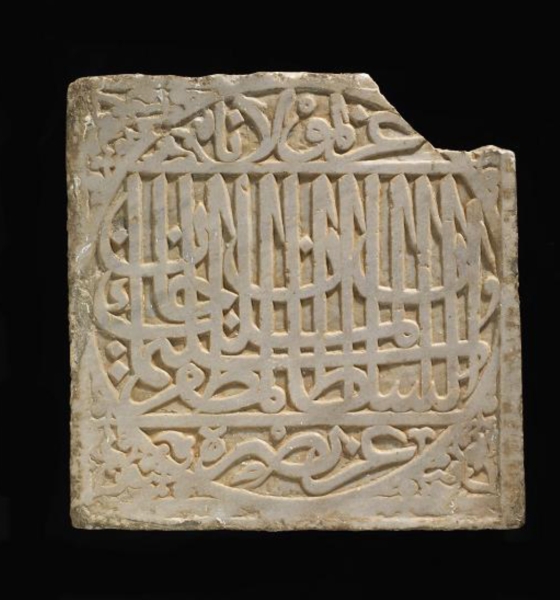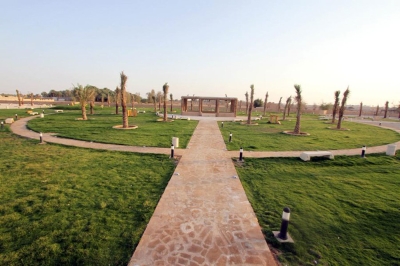

The Ancient Marble Foundation Stone is a square marble slab discovered in Makkah al-Mukarramah City. The slab is damaged at its upper left corner. It features an inscribed decorative band within a circle, surrounded by geometric patterns at its four edges. The inscription consists of three lines written in the Thuluth script.
Measurements of the stone
Length: Thirty-seven cm.
Width: Thirty-seven cm.
Thickness: Three cm.
History of the stone
The marble foundation stone dates back to the Ottoman period. It was used as a foundation stone for religious and official buildings.
The stone was registered under number 909 and is preserved at the National Museum in the capital, Riyadh. It is among the findings from archaeological surveys and excavations conducted by the Antiquities and Museums Sector in the Kingdom of Saudi Arabia over the past years. It is part of the discoveries made by archaeologists and scientific missions, who continue to uncover the treasures of the Saudi lands in collaboration with international research teams.
The marble stone was included in a curated collection of archaeological discoveries from SAudi Arabia, showcased in the Saudi Archaeological Masterpieces Through the Ages Exhibition. The exhibition began its journey across museums and galleries worldwide, including Asia, Europe, and America, starting at the Louvre Museum in the French capital, Paris, in 2010.
Significance of the stone
This slab, carved from pure white marble, highlights the attention given to the Two Holy Mosques. Similar carved marble slabs were used in various types of buildings, including religious and official structures such as mosques, schools, agencies, libraries, and kuttabs. In addition to serving as foundation stones for these structures, such carved slabs added distinctive beauty to the architectural designs, both external and internal, with their decorative vegetal and calligraphic motifs. The inscriptions and decorative elements on this marble slab showcase the remarkable skill of the Muslim artisan in employing the Thuluth script in an intricate and interwoven manner. This script is among the most challenging Arabic scripts due to its strict rules and proportions. Moreover, the marble stone illustrates the evolution of Arabic calligraphy over time.
Related quizzes
Related articles
